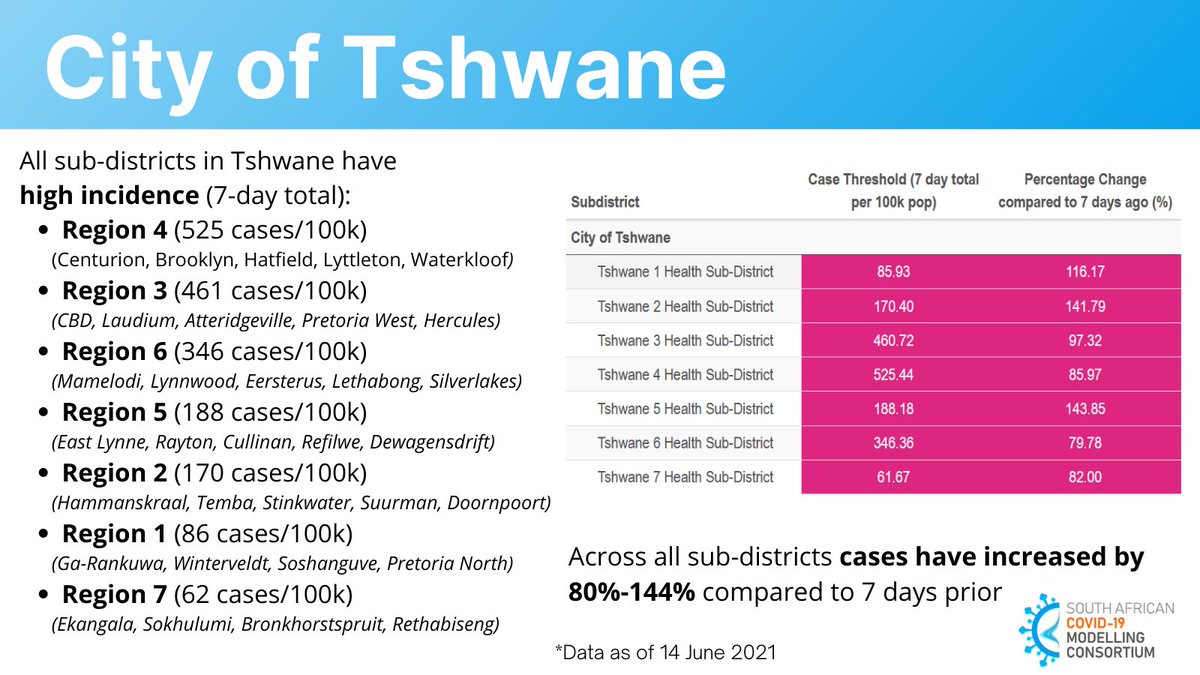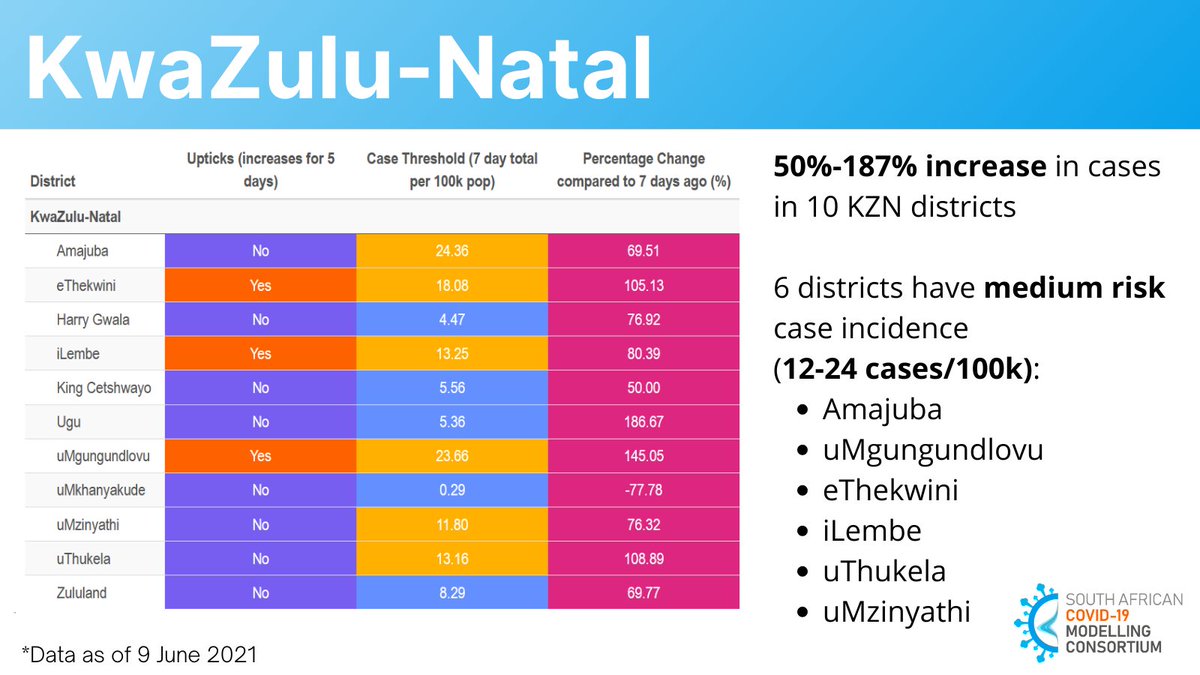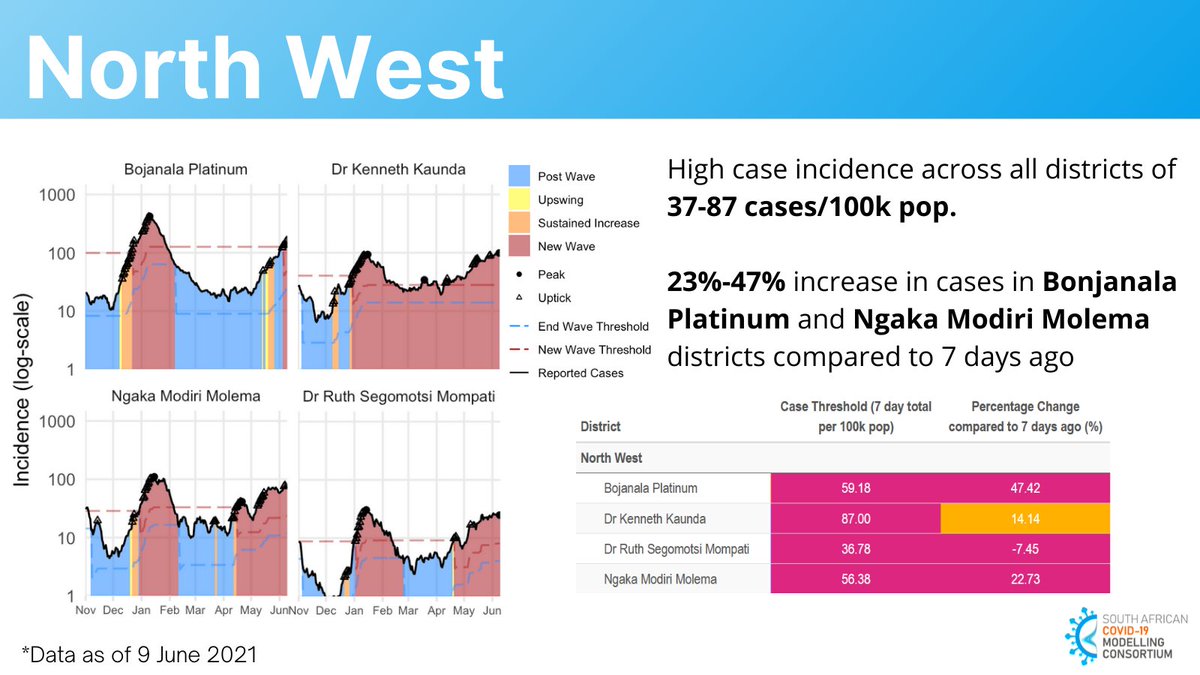
[1/5] CITY OF JOHANNESBURG Update: High case incidence across all sub-districts over the last week and extremely high case numbers reported in Regions C, D, E and F; cases increasing by 62%-150% compared to 7 days prior. 

[2/5] TSHWANE Update: High case incidence across all sub-districts ranging between 62 and 525 cases per 100k pop. Increases of 80%-144% compared to the 7 days prior.
Visit sacmcepidemicexplorer.co.za to follow cases and hospitalizations in your region.
Visit sacmcepidemicexplorer.co.za to follow cases and hospitalizations in your region.

[3/5] EKURHULENI Update: All sub-districts are experiencing high case incidence, ranging between 76 and 264 cases/100k pop. Percentage change in cases ranges between 25%-124% compared to the week before. 

[4/5] SEDIBENG Update: High case incidence in all sub-districts (117-312 cases/100k pop) with daily incidence rates close to or higher than the peak of the second wave.
Visit sacmcepidemicexplorer.co.za to follow cases and hospitalizations in your region.
Visit sacmcepidemicexplorer.co.za to follow cases and hospitalizations in your region.

[5/5] WEST RAND Update: Daily incidence rates in all sub-districts are higher than the peak of the second wave. 7-day incidence is high ranging between 141-345 cases/100k pop and cases have increased by 120-124% compared to 7 days prior. 

• • •
Missing some Tweet in this thread? You can try to
force a refresh






